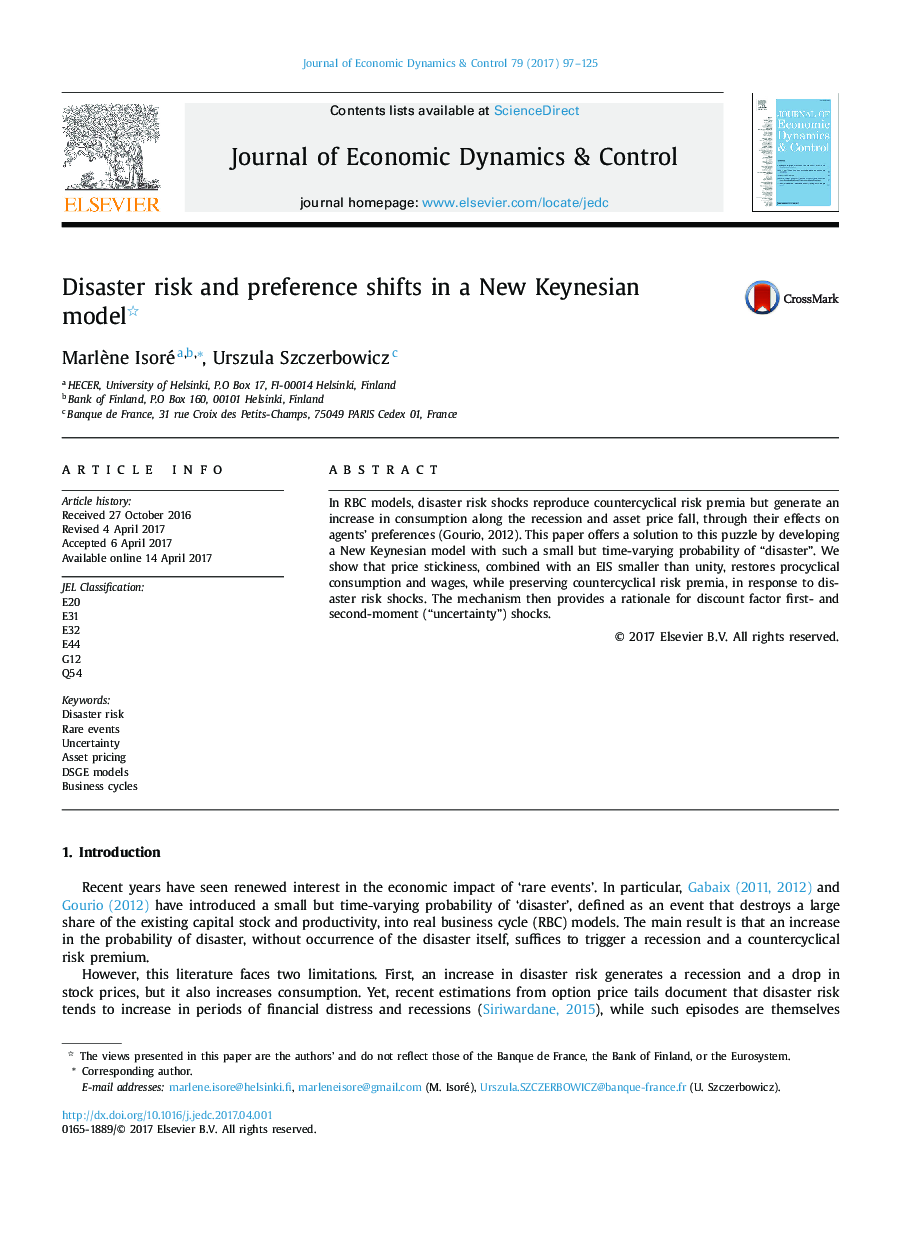| Article ID | Journal | Published Year | Pages | File Type |
|---|---|---|---|---|
| 5098024 | Journal of Economic Dynamics and Control | 2017 | 29 Pages |
Abstract
In RBC models, disaster risk shocks reproduce countercyclical risk premia but generate an increase in consumption along the recession and asset price fall, through their effects on agents' preferences (Gourio, 2012). This paper offers a solution to this puzzle by developing a New Keynesian model with such a small but time-varying probability of “disaster”. We show that price stickiness, combined with an EIS smaller than unity, restores procyclical consumption and wages, while preserving countercyclical risk premia, in response to disaster risk shocks. The mechanism then provides a rationale for discount factor first- and second-moment (“uncertainty”) shocks.
Keywords
Related Topics
Physical Sciences and Engineering
Mathematics
Control and Optimization
Authors
Marlène Isoré, Urszula Szczerbowicz,
